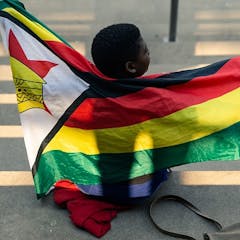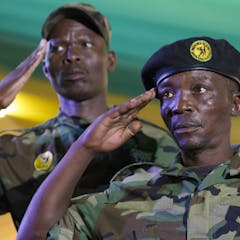
Articles on Civil disobedience
Displaying 1 - 20 of 29 articles

Some people refuse to file tax returns or pay all of their income tax due to moral or ethical concerns. The IRS warns that they, like more selfish tax scofflaws, may face penalties.

Police have warned climate protesters could face up to 14 years in jail for ‘endangering transport’ – longer than the maximum for serious crimes like ram-raiding.

Distinct from civil disobedience, this legal strategy demands complete compliance with the law – even when there are loopholes that the laws’ creators didn’t intend.

Opposition activists have previously been accused of treason and unpatriotic behaviour for expressing concerns about human rights abuses.

Defendants are increasingly unable to explain their actions to a jury.

What should climate scientists do in the face of ever rising emissions? They could continue providing more evidence, join climate activists – or stop work in protest against government inaction.

A Catholic historian writes about nuns who protested against nuclear weapons. Even when convicted of sabotage, they used prison time to serve fellow inmates and push for justice.

By introducing tactics of direct action and digital mobilisation, Fridays for Future and Extinction Rebellion have renewed the climate movement and accelerated climate action.

The dismantling of the liberation armies and that of the apartheid state was managed badly. It left in its wake thousands of angry veterans who felt betrayed.

Klaaste was distressed by what was happening in black communities, where residents faced state terror and political violence. He sought to restore values such as self-help and neighbourly conduct.

Native Americans have long struggled to practice their spiritual rituals and protect their landscapes. Crackdowns on Indigenous protests could further erode the free exercise of their religions.

Environmental groups have protested logging of British Columbia’s old-growth rainforest for three decades. But the Fairy Creek dispute could grow into another ‘War in the Woods.’

When the Truth and Reconciliation was mandated to investigate human rights violations from March 1960, that left twelve years of apartheid rule unexplored.

The military is escalating its pressure on protesters in Myanmar, but it’s running out of options for resolving the crisis. Bullets may not be enough to quash the opposition this time.

Technology has played a key role for both sides engaged in the conflict. So what would happen if Myanmar’s military shut down all communication to the outside?

The term was first used in 1917 for a political agitation that Mahatma Gandhi launched against the British, on behalf of farmers.

Once paid, tax becomes the property of the government. Pretending otherwise undermines the basic principles of the social contract.

One person’s stockpiling can mean another one’s shortage. A philosopher reminds us of our social and moral obligations at this time.

Extinction Rebellion take inspiration from history for their tactics – but today’s police service is much harder to overwhelm than it used to be.

They’ve been branded as anarchists and ‘fringe-dwellers’, but do Extinction Rebellion protesters really warrant such drastic reactions?
